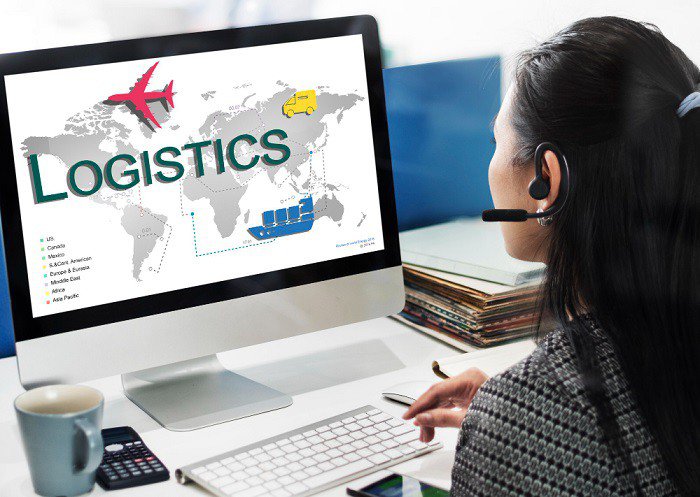
Efficiency is crucial to success in the quick-paced world of logistics operations. Logistics operations must be streamlined for businesses to remain competitive and fulfill customer expectations. Focusing on warehousing, transport management, maintenance and logistics tracking, and ocean freight shipping, this blog examines five efficient strategies that can help streamline logistics operations in the USA.
Businesses can streamline their operations, cut expenses, and improve overall efficiency by implementing these strategies.
5 Ways To Consolidate Logistics Operations In The USA
Optimize Warehousing Operations
Logistics processes must run smoothly, which depends on effective warehousing operations. Companies can streamline their warehousing operations by employing a variety of tactics. First off, automating inventory management, order processing, and tracking is possible by implementing a warehouse management system (WMS). This improves accuracy and lowers manual errors. Second, logical product placement and effective storage strategies can be implemented to optimize the warehouse's layout, enhancing picking and packing procedures.
Additionally, implementing cross-docking procedures and utilizing real-time tracking technologies can reduce the time inventory is held on hand and speed up order fulfillment. Businesses can lower storage costs, increase order accuracy, and speed up the delivery of goods to customers by optimizing their warehousing operations.
Implement Effective Transport Management
Logistics operations depend heavily on transportation. Businesses can optimize their supply chain and reduce costs by implementing efficient transport management strategies. Route planning, load consolidation, and carrier selection can all be made more efficient by using transportation management systems (TMS). This enables businesses to reduce empty miles, save on fuel, and improve delivery effectiveness. Furthermore, using data analytics and real-time tracking technologies can offer insightful information about the performance of the transportation sector, enabling proactive decision-making and quick problem resolution.
Additionally, costs and flexibility can be decreased by collaborating with dependable logistics partners and implementing intermodal transportation solutions. Businesses that strongly emphasize efficient transport management can speed up deliveries, lower transportation costs, and offer better customer service.
Embrace Maintenance and Logistics Tracking Technologies
Logistics operations depend on having an effective fleet. Maintenance and logistics tracking technologies can improve fleet performance by streamlining operations, lowering downtime, and reducing waste. By putting fleet management systems in place, vehicle conditions can be seen in real-time, enabling proactive maintenance and lowering the risk of breakdowns. Monitoring driver behavior, planning routes, and improving fuel efficiency are all possible with telematics solutions.
Predictive maintenance technologies can also spot potential problems before they become serious, reducing unforeseen breakdowns and expensive repairs. By implementing maintenance and logistics tracking technologies, businesses can increase fleet reliability, lower maintenance costs, and boost overall operational efficiency.
Optimize Ocean Freight Shipping
Optimizing ocean freight shipping is essential for companies engaged in international trade because it can streamline logistics processes and cut costs. Companies can concentrate on several crucial areas to achieve this. First, efficient container utilization can reduce unused space and cut shipping costs through proper packing and consolidation. Utilizing container tracking technologies can give users real-time insight into how containers are moving, lowering the possibility of delays and enhancing supply chain visibility. Additionally, working with reputable ocean freight carriers and securing advantageous contracts can result in cost savings and higher service standards.
Additionally, delays can be avoided, and clearance processes can be sped up by optimizing documentation processes and ensuring compliance with customs regulations. Businesses can cut expenses, increase supply chain visibility, and boost overall effectiveness by optimizing ocean freight shipping.
Analyze Sea Freight Cost Structures
To find potential areas for cost optimization, an analysis of the cost structures of sea freight is crucial. Businesses can find opportunities for cost savings and improve contract negotiations by conducting a thorough analysis. The most economical choices can first be found by assessing ocean freight rates and contrasting quotes from various carriers. Second, costs can be reduced by optimizing container load factors and looking into alternative shipping routes. Analysis of fuel taxes and other ancillary fees can also reveal possible points of negotiation and cost-cutting.
Regular freight audits can spot billing mistakes and inconsistencies, ensuring accurate cost allocation. Businesses can cut costs and increase overall profitability by routinely analyzing the cost structures of sea freight.
Conclusion
Logistics operations must be streamlined for businesses to succeed in today's cutthroat business environment. Companies can improve their warehousing operations, implement efficient transport management, adopt maintenance and logistics tracking technologies, optimize ocean freight shipping, and examine sea freight cost structures by implementing the strategies above. These tactics increase operational effectiveness, cut expenses, raise customer satisfaction, and give businesses a competitive edge. To remain competitive and guarantee sustained success in the fast-paced US business environment, companies must stay up to date with the most recent trends and technologies in logistics operations.
FreightMango’s five tried-and-true methods—optimizing warehousing, managing transportation efficiently, monitoring maintenance and logistics, shipping ocean freight, and analyzing sea freight costs—are created to help you run your business more efficiently and gain a competitive edge. Utilizing the cutting-edge technology platform offered by FreightMango, you can automate inventory management, improve route planning, and get real-time visibility into your logistics procedures. Our skilled team guarantees smooth implementation and ongoing support, assisting you in increasing order accuracy, delivery speed, and overall operational effectiveness.





 Get instant quote
and compare offers in real time
Get instant quote
and compare offers in real time